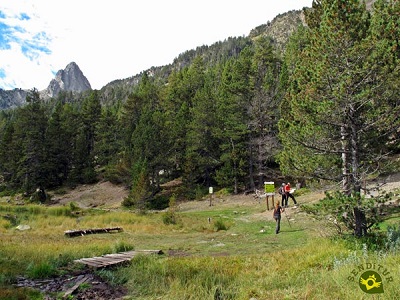When we are told about the marks or signs of a route we all think of the typical marks of the paths, GR or PR, that we usually see in our hiking and mountain routes, but do we really know how to interpret them and what information that signaling is giving us?

Let's start with a quick review of the different types of signs that we can find and that are generally common to a good number of countries, especially in our environment.
The marks are characterized by being composed of two or sometimes three rectangular strips painted along the route on stones, trees, etc... or on posts corresponding to the equipment of the route, also within this equipment we can find explanatory and direction panels.
Their colour changes depending on the type of path they belong to and their shape changes according to the indication you are giving. They can also be accompanied by a nomenclature that further identifies the path to which they belong by giving us their name and even telling us the province in which the route is located. Of course, they must be easy to find and there must be visible marks in both directions.


These marks, the most common, correspond to the trails approved by the Mountain Federation, so that these types of trails and signs are subject to standardized criteria and annual maintenance.
But we also have to find other brands and signs that are not within the protection of the federation, although some of them follow very similar criteria by changing only their colors. They are usually thematic routes generally promoted by institutions, organizations or associations that seek to publicize a particular area. These routes are usually subject to the control and specific regulations dictated by the competent administration of each place.
It is also usual to see the marks left by the hikers or mountaineers themselves, such as points, arrows or the typical milestones, accumulations of stones that serve as a reference on unofficial routes. These types of marks, although they have undoubtedly helped many people out, do not provide as much information as the official marks.

In any case and no matter how well signposted a route is, we cannot rely on all our guidance on its marking. It is important to prepare the route in advance and to have the means and experience on the ground to be able to follow the route or return to our starting point without the invaluable help of signposting. We must not forget that no matter how much maintenance is required, the natural environment is unpredictable and what was a visible and unmistakable mark in the past may have disappeared today or, for various reasons, may not be so visible, leaving us without indications to guide us towards our destination.
We would be grateful if you could write to us to inform us of a ny erroneous or outdated information you have found, or simply to let us know what you think at Thank you very much.